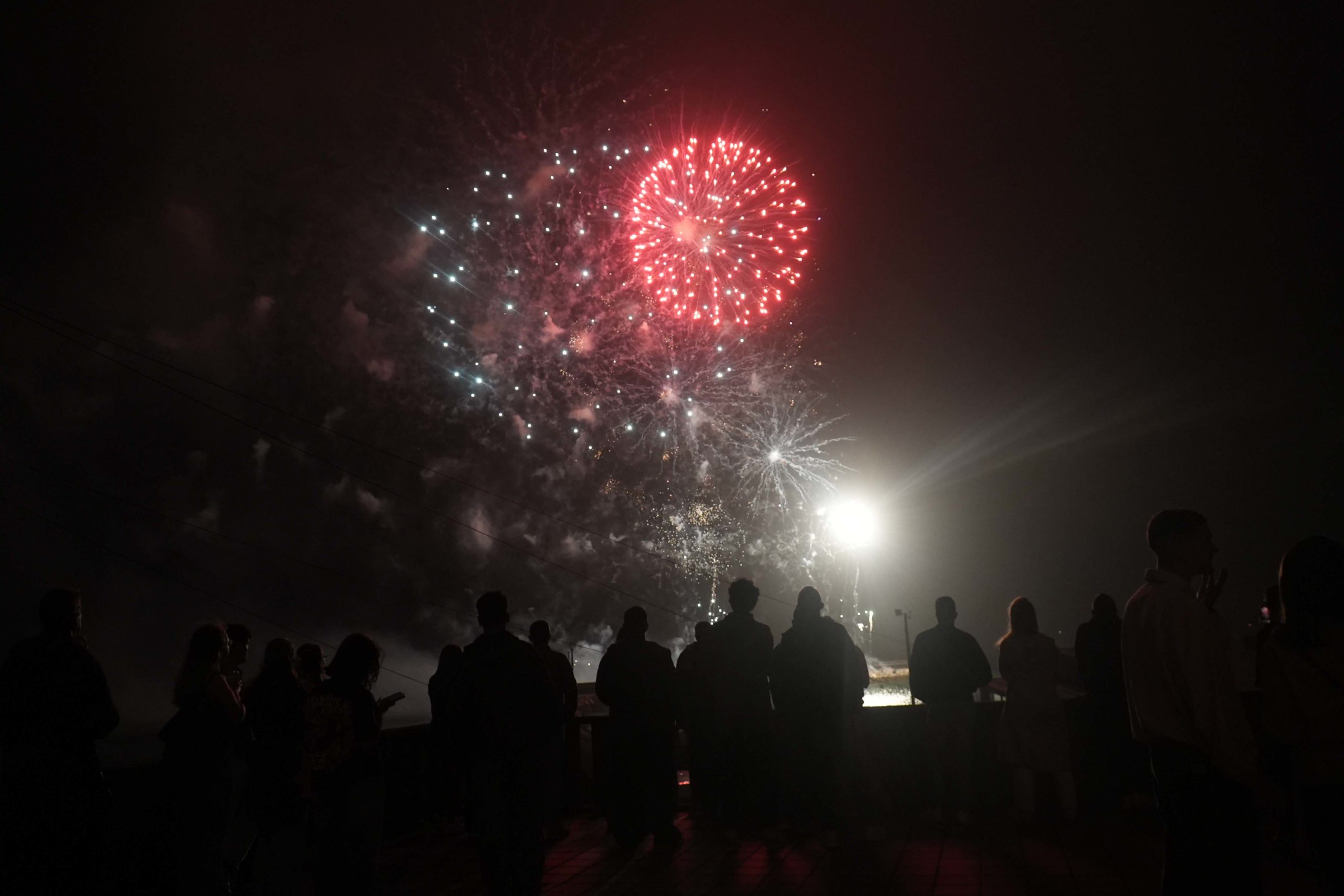The Romería de la Virgen de la Barca festival in Muxía (Galicia) ended its latest edition on a very positive note. “We are very pleased with the good turnout recorded at this edition, despite the threat of rain, with more than 55,000 people participating in the various activities of the festival. In fact, on Sunday, there were more people than last year,” said Ramón Pérez Barrientos, president of the Cultural Association of the Pilgrimage of La Barca, which organised the festival programme.
‘The festivities went off without a hitch and there were no significant incidents,’ said Pérez, who also highlighted the event’s popularity this year. ‘Journalists from the international media came to Muxía to see our celebration up close, and they were very surprised by the number of people attending, the variety of activities on offer and unique aspects such as the fireworks and our palenque firecrackers,’ he explains.
Accommodation in the municipality was fully booked during the big weekend of the event. In the case of hostels, there was a significant influx of foreign pilgrims who wanted to take advantage of their trip to discover the extensive programme of events, which combined religious services with cultural and leisure activities. The restaurants and bars in the capital of Muxía were just as crowded during the festivities, as were the pulpería tents and the various food stalls scattered around the Malecón area.
Visitors from all over the world
For its part, the Sanctuary of La Barca continued to receive visitors during the week leading up to and during the pilgrimage itself. “The fact that it was reported in the media that the stone had moved again also increased the number of pilgrims to the temple, not only on the main days, but also throughout the Novena. In addition, the night-time torchlight procession attracted more devotees than last year. Even this weekend, the turnout was massive,‘ said the parish priest of the temple, Daniel Turnes, who also highlighted that ’the collaboration between institutions contributed to the overall success.”
The parish priest also highlighted the increase in the number of ‘pilgrims from all over the world’. Not surprisingly, during the Virgen de la Barca Festival, people of various nationalities gathered at the temple: Koreans, Taiwanese, Americans, English, South Americans, Irish, French and even Indonesians… A melting pot of origins with the same goal: to discover the spirituality and unique surroundings that make the Sanctuary of La Barca a prominent place of worship and visit. ‘Pilgrims who end their journey in Muxía seek a space here for reflection and to compile all the experiences they have had during their journey… And they usually come back,’ concludes Turnes.
The combination of liturgical and recreational events makes the programme a perfect mix to attract all kinds of audiences. Thus, over the four days, there were processions, services and outdoor Masses, as well as parades with brass bands, marching bands and folk groups, and performances by large orchestras, culminating in a concert by the international artist Soraya Arnelas.
‘This year, we decided to expand the range of cultural and leisure activities on offer, without neglecting the more traditional aspects,’ said the president of the Cultural Association of the Romería de la Barca de Muxía. It is a perfect combination that makes this celebration a benchmark not only nationally, but also internationally.
Large deployment of personnel
In this regard, the large influx of visitors required a large contingent of emergency and security personnel. ‘As on previous occasions, we had around a hundred Civil Protection volunteers from different parts of Galicia and also from other parts of Spain, such as Madrid, the Valencian Community and Extremadura,’ he explained.
In addition, and in order to ensure the health of those attending, there were three mobile intensive care units, a SAMUR team of ten professionals, and another team specialising in gender violence from Getafe, with four members. These were joined by around twenty local police officers and a dozen Civil Guard patrols (Traffic, Seprona and riot police).
